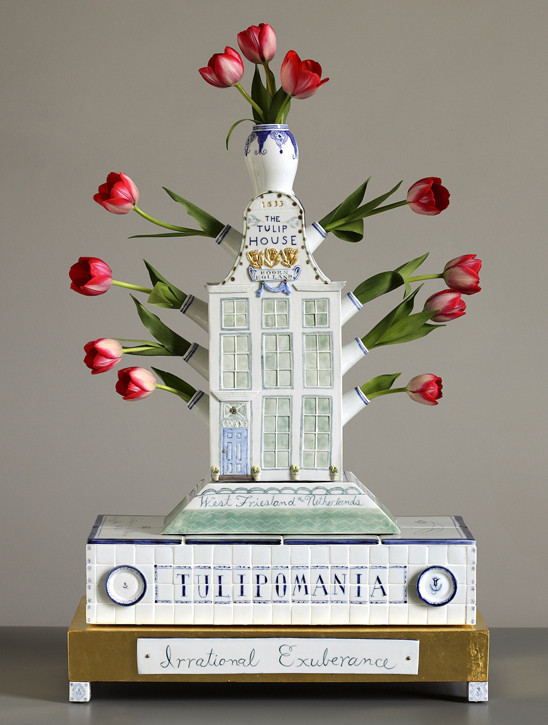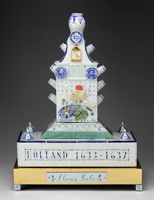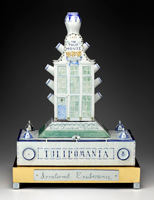
I was thinking about the build-up to America's financial calamities during the past few years: the housing bubble, over-leveraging and the banking and credit crisis, etc. I recalled Allen Greenspan's accurate assessment of the circumstances, calling those days a time of "irrational exuberance." Being a romantic and a lover of history, I recalled reading "The Tulip" by Anna Pavord and "Tulipomania" by Mike Dash, about an historic time that was not unlike the present situation...


In the 17th century, the port town of Hoorn on the Zuider Zee in West Friesland in the Dutch Republic, a fascinating event occurred which sparked my imagination and inspired my sculpture, "Tulipomania/Irrational Exuberance."" In 1633, during an unprecedented national obsession with the newly introduced Tulip flower from Asia, a bizarre transaction took place: an exchange of a house for three tulip bulbs(!), signaling the beginning of a 4-year period of craziness preceding the "great tulip crash of 1637."
To provide a sense of the monetary values at that time I quote from "Tulipomania" by Mike Dash:
The basic unit of currency in the republic was the guilder. One guilder was made up of 20 stuivers.
20 stuivers = 1 guilder
1/2 stuiver = Cost of a tankard of beer
6 1/2 stuivers = Cost of a 12-pound loaf, 1620
8 stuivers = Daily wage of an experienced Haarlem bleacher, 1601
18 stuivers = Daily wage of an Amsterdam cloth-shearer, 1633
13 guilders = Exchange price of one Dutch ton of herring, 1636
60 guilders = Exchange price of 40 gallons of French brandy, 1636
250 guilders = Annual earnings of a carpenter, 1630s
750 guilders = Clusius's salary at the University of Leiden, 1592
1,500 guilders = Typical earnings of a middle-ranking merchant, 1630s
1,600 guilders = Rembrandt's fee for his greatest masterpiece, "The Night Watch," 1642
3,000 guilders = Typical earning of a well-off merchant, 1630s
5,200 guilders = Highest reliably attested price paid for a tulip bulb, 1637
During this period, the Dutch Golden Age, contract prices for the tulip reached extraordinary heights and then suddenly collapsed, ruining many investors and involving the entire population from nobleman to servant, all of whom dabbled in tulips. This event is considered to be the first recorded speculative market bubble. In 1841, Charles Mackay wrote about the tulip mania in his book "Extraordinary Popular Delusions and the Madness of Crowds"" which started a modern discussion of the fickleness of financial markets.
One side of my sculpture depicts the exchanged house with itŐs three tulips carved in stone on the facade. The other side depicts a Dutch Golden Age interior with a feast and riches of the period including miniature Ming chargers. Both sides sandwich an 8-spouted tulip vase, the lid replicating a small Delft vase.
The top of the three bases represents the Zuider Zee and describes the story. The center base, a picture composed of miniature Dutch tiles, depicts the "Semper Augustus," considered the most valuable tulip bulb. The entire piece is exalted by resting on a golden base.
My design process, intentionally extravagant and quirky, is consistent with the insanity of the occasion and mentality that inspired the idea.-Mara Superior, Williamsburg, Massachusetts, August, 2009

